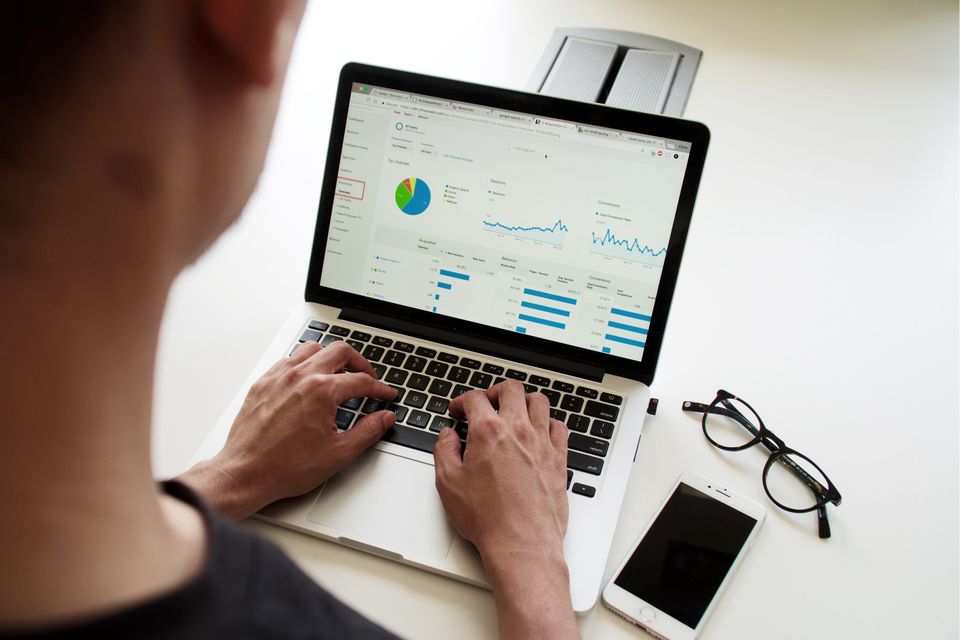9 Common Website Traffic Stats Explained
There are over 5.07 billion daily Internet users worldwide so you can reach a large base of potential customers with your website. But before you can tap into that potential, you must know whether your website can attract those visitors. Your website traffic stats are a good place to start.
These are the numbers that show how many people visit your site and what they do while they're there. Web stats can help you see how well your marketing efforts are working. You can gauge whether they're generating traffic or not.
But these metrics are only helpful if you know how to interpret them. Read on for a breakdown of the essential website traffic stats and what they mean for your business.Why Are Website Stats Important?Your website stats will tell you a lot about how your business is doing. They can help you see if anything needs to be improved on the website itself. Maybe people aren't sticking around long enough to read an article or watch a video, which means they won't be able to discover other exciting content.
These stats will help you figure out what needs to be done so your website can lead to more conversions.Website Traffic Stats ExplainedIf you want to improve your website and attract more visitors, understanding its current performance can help you make the necessary adjustments. You can gather website statistics from various sources. The metrics below are among the most common.1. Unique VisitorsUnique visitors are a metric that shows the total number of new users who visit your site. It doesn't include repeat visits from the same person. If you see a website ten times over one day, then that counts as one unique visit.
Even if you visit the same site two or three days later, it would still count as one unique visit because unique visits are counted within a 30-day window.2. Website Visits (Or Sessions)Programs count website visits when a user requests a page from the server. This will generate one stop.
Every time someone visits your site and clicks on something to load another page, this counts as another visit. If someone goes to your site 48 times over 30 minutes, you'll have 48 trips recorded.
A session is a time a user spends clicking around on your website. This number is significant for marketers because it helps them measure engagement.3. Total Page ViewsTotal page views are the total number of times a page has been viewed from your site. This can include both single-view and multiple-view visits. If someone visits your site and views ten pages in one stop, they'll get counted as one visitor, but ten total page views.4. Pages Per VisitPages per visit is a metric that measures how engaged your site's visitors are with your content. It's calculated by dividing the total number of page views by the total number of visitors.
A high pages-per-visit (P/V) ratio indicates that people spend more time viewing and interacting with your created content. That's good news because your website converts visitors into leads or customers.5. Average Time on Site (Or Average Session Duration)The average time on site is when people visit your website. It's calculated by dividing the total time spent on your website by the number of visitors.
A high average indicates that people spend much time interacting with your content and not just clicking through quickly. If a visitor spends an hour on your site, there's a good chance they'll be interested in what you offer as opposed to if they only look at it for 30 seconds.
The average session duration is about one minute, regardless of industry.6. Bounce RateThe bounce rate measures the number of visitors who leave a website after viewing only one page. It tells you whether people are engaging with your webpage's content. It also indicates whether users are finding what they're looking for.
A bounce rate under 40 percent is excellent and means your website is attractive and engaging.7. Mobile Site VisitsWhen a user accesses your website using a mobile device, this is mobile traffic. Mobile traffic is significant because it accounts for over half of all internet usage.
If your mobile site visits are low, check to see if the website loads fast on phones and is designed for small screens.8. Inbound LinksInbound links are external hyperlinks that point to your website. Links from other sites to your own are a sign to Google that you're a reputable source of information. As such, you'll be rewarded with higher placement in search results.
That being said, not all backlinks are equal. While each counts toward your SEO ranking, not all inbound links will give you the same boost as others.9. Traffic SourcesTraffic sources are the channels that bring visitors to your website. They can be broken down into two categories, organic and paid.
Organic traffic is free and comes from search engines like Google, social media like Facebook and Twitter, email campaigns, or anything else that's not paid for by you. Paid traffic can be anything from PPC ads on search engines to campaigns on social media platforms.Create a Website That's Designed to Attract VisitorsYour website traffic stats are an essential part of your SEO. If you want to improve your metrics, then it's vital that users can easily navigate your website and find what they're looking for. You must have a clean design with plenty of white space and clear navigation menus to do this.
As you can tell, creating a professional-looking website is not as easy as it sounds. Why take on the hassle when our agency will do it for you? Contact our team of designers today to learn more about how we can help you build a fantastic website that drives traffic.


